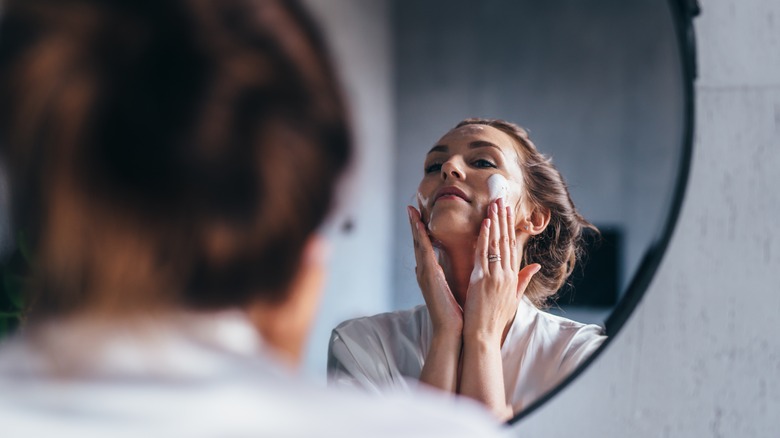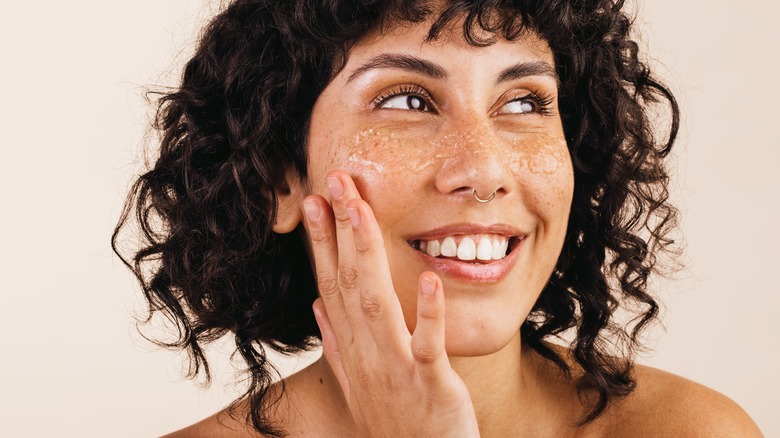The Difference Between Physical And Chemical Exfoliants
Every good skin routine has some essential steps — cleansing, moisturizing, and the all-important sunscreen — but there are a lot of other steps you can add. You may have the perfect order for your skincare routine down packed, with different toners and serums, but what about exfoliants? Approximately every 30 days the skin naturally sheds to make way for new skin cells, according to Healthline. Although the skin naturally sheds, it does not remove all the dead cells. That is why we are sometimes left with flaky skin. When we exfoliate we are removing dead skin cells.
According to Real Simple, exfoliating can improve the appearance of your skin. It helps to remove bacteria, sweat, and product build-up left on the skin's surface. This can reduce acne breakouts and clogged pores. Without a layer of dead skin cells, your moisturizers and serums can melt easier into your skin. Now you know exfoliant is a skincare must. There are two main types of exfoliants, physical and chemical. We're here with the differences between the two and which is right for you.
Physical vs. chemical
If you're familiar with the difference between mineral and chemical sunscreens, then you may have a good guess about the difference between physical and chemical exfoliators. Chemical exfoliants use acids and enzymes, according to Goop, to remove dead skin cells from your skin's surface. You may also see chemical exfoliants in the form of resurfacing serums. This skincare product is designed to leave you with the appearance of smaller pores and even skin, by stripping what blocks healthy and fresher skin cells.
Physical exfoliants achieve the same outcome but through a different method. Instead of chemicals dissolving the dead skin cells, physical exfoliation uses scrubs with tiny particles to remove the remnant surface, according to WebMD. The sandy texture of the scrubs helps to manually remove debris from your skin. This method of exfoliating can also be achieved with washcloths, loofahs, and brushes. Knowing which methods work best for you will help you avoid the biggest exfoliating mistakes.
Which is right for you?
The choice between physical and chemical exfoliants depends on your skin type. Strong chemical exfoliants and harsh physical exfoliants can irritate dry and acne-prone skin, according to the American Academy of Dermatology. Instead, opt for a mild chemical exfoliant and a softer physical exfoliant. People with darker skin tones and skin vulnerable to dark spots should also opt for gentle exfoliation as the acids and abrasiveness in stronger methods can lead to hyperpigmentation.
When using your preferred exfoliating method, it is important to use it correctly. Misusing the right exfoliating method can be just as harmful as using the wrong method. The Healthy recommends applying light pressure when scrubbing with physical exfoliants — overdoing it can break blood vessels. Don't forget to use moisturizer and sunscreen after exfoliating. The process removes the outer layer of the skin, sometimes leaving the skin's surface dry and vulnerable to sun damage. If done correctly, shedding that dead skin can give you new life.


